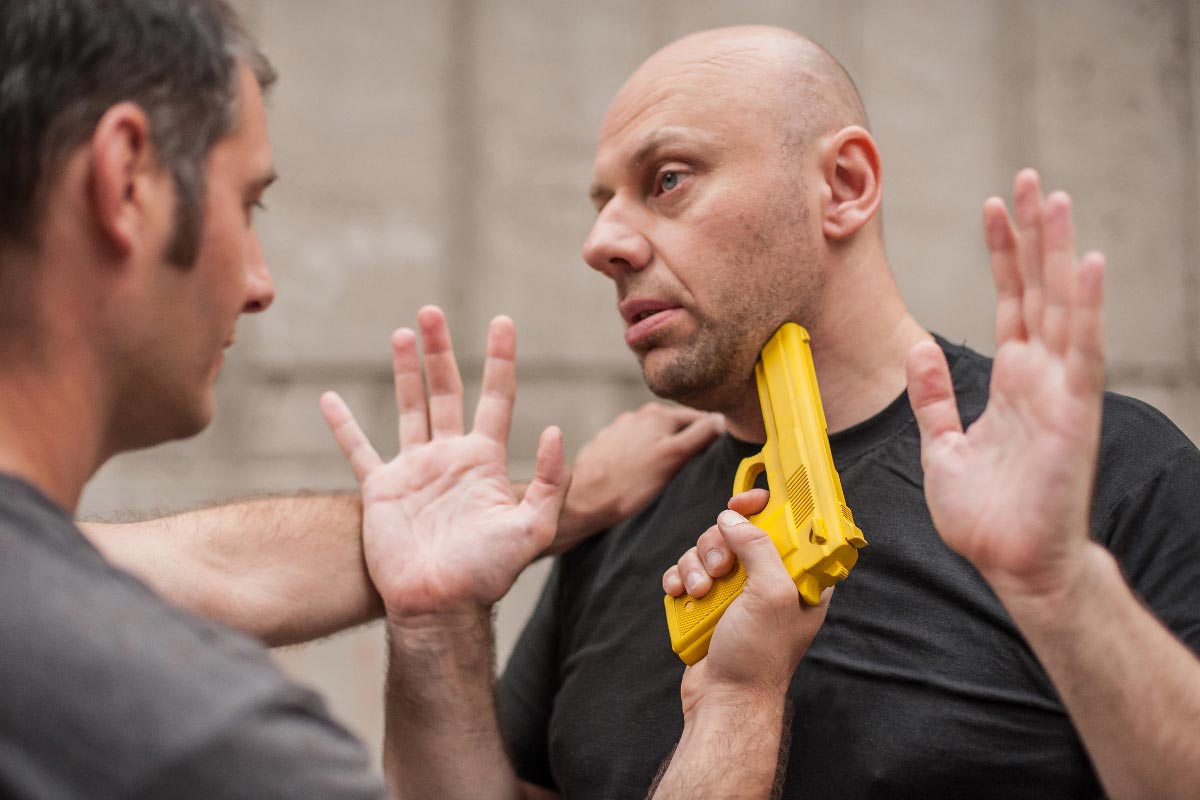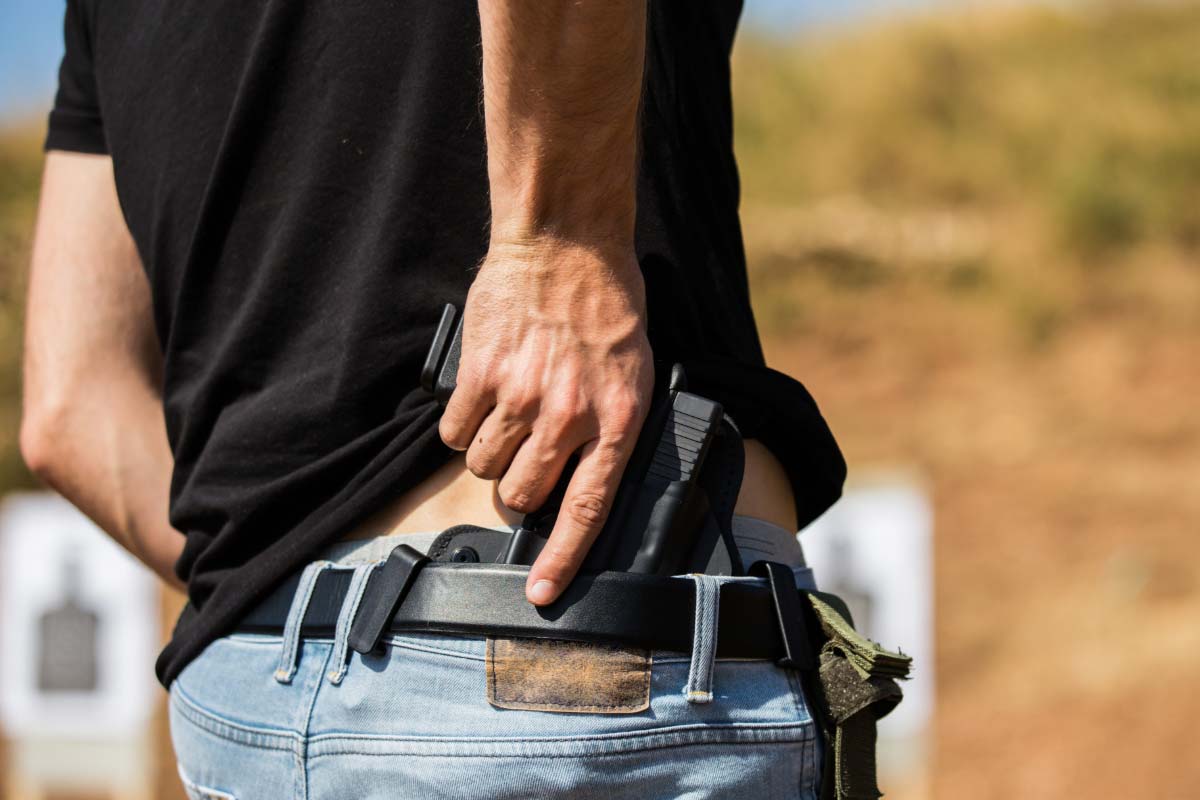Looking to learn real-world self-defense skills? Learn more about the intense discipline known as Krav Maga, the no-nonsense fighting system developed for the Israeli military.
We break down the key principles of Krav Maga, from its focus on instinctive movements to its brutal counterattacks and combat techniques. Whether you’re a total beginner or experienced martial artist, this piece will give you an inside look at one of the most practical fighting systems designed for real-life scenarios.
This article covers:
Overview of Krav Maga
Krav Maga is an Israeli self-defense system known for its practicality and efficiency in close-quarters combat. It was originally developed for the Israel Defense Forces (IDF) to train military personnel, emphasizing instinctive movements along with aggressive counterattacks. As a self-defense system, it is crafted to prepare individuals to protect themselves in various threatening scenarios.
The techniques in Krav Maga are derived from a combination of skills found in other martial arts such as jiujitsu, judo, boxing, muay thai, and wrestling, with a significant focus on real-world situations. It stands out for its straightforward approach, designed to be adapted by people of any age or size. Furthermore, it doesn’t involve the ceremonial elements typically found in traditional martial arts, making it more accessible for the average person.
Aside from the military, Krav Maga has found a wider application within law enforcement agencies worldwide due to its effective methods of neutralizing threats swiftly. Civilians also seek Krav Maga for its practical self-defense techniques that can be easily retained and executed under stress.
Through Krav Maga, practitioners learn to defend against a variety of attacks and are encouraged to use their natural reflexes for self-protection. It advocates for a no-holds-barred mentality, which includes targeting an assailant’s most vulnerable points to end a confrontation as quickly as possible. This discipline continues to evolve, shaped by real-world experiences and the need for efficiency in defense tactics.
Historical Development
Krav Maga’s origins begin with its founder, Imi Lichtenfeld, an accomplished athlete in boxing, wrestling, and gymnastics. Born in 1910 in Budapest, Lichtenfeld was raised in Bratislava, Slovakia, absorbing combat skills and strength from his father, a police officer and self-defense instructor. With the rise of fascism in the 1930s and ’40s, Lichtenfeld utilized his martial prowess to defend the Jewish community against hostilities.
Seeking refuge, Lichtenfeld immigrated to what would become Israel, where his combat system attracted the attention of the Haganah, a Jewish paramilitary organization. By the 1940s, as Israel contended with regional conflicts, the Haganah evolved into the Israel Defense Forces (IDF). Lichtenfeld, commissioned to develop a system of self-defense and hand-to-hand combat, adapted his method for military personnel, emphasizing efficiency and rapid learning.
Considering the geopolitical instability in the Middle East at the time, Krav Maga had to be practical and applicable under stressful conditions. It assimilated elements from various martial arts, honing a curriculum suitable for both soldiers and eventually, civilians. Krav Maga officially became part of IDF training, ensuring soldiers were prepared for close-quarters combat.
In the decades following its military adoption, Krav Maga expanded globally. It transformed into a civilian self-defense practice, preserving the original focus on real-world situations but adjusted to legal and ethical considerations of civilian altercations.
Key Principles and Philosophy
Krav Maga’s philosophy is rooted in maximum efficiency and real-world application. It emphasizes instinct-based responses, enhancing natural movements to improve self-defense capabilities. As a martial art prioritizing practicality, it constantly evolves to address contemporary threats.
The system’s core principles stress awareness and prevention as much as physical confrontation. In Krav Maga, one’s first goal is to protect themselves and defuse situations peacefully if possible. However, should conflict be unavoidable, practitioners are trained to respond with decisive and effective action.
Incorporating a wide array of techniques, Krav Maga builds upon one’s strengths and teaches how to exploit an aggressor’s vulnerabilities. It transcends traditional martial arts by focusing less on formality and more on adaptable skills. Training includes promoting a state of mental readiness and peace amidst chaos.
As a principles-based system, Krav Maga enhances instinctive movements, making them more formidable. Such adaptability ensures both novice and experienced fighters can apply techniques efficiently, aligning with the philosophy of practical and effective self-defense.
Training and Techniques

Krav Maga training consists of a structured blend of techniques and strategies aimed at practical self-defense. Classes focus on honing instinctive movements and promoting situational awareness to respond effectively during an attack.
Basic Techniques and Skills
Basic skills in Krav Maga include a range of strikes, kicks, and punches. These techniques are not just about power but also about speed and efficiency. Practitioners learn to target vulnerabilities such as the eyes, throat, and groin strikes with straightforward movements that can become reflexive. While Krav Maga explores ground fighting techniques, its primary focus is on standing attacks and keeping the fight on your feet.
Defensive Tactics and Strategies
Defensive strategies in Krav Maga are designed to quickly neutralize threats and de-escalate situations. Training involves learning to defend against common attacks, including chokes and headlocks. Emphasis is placed on escapes and countermovements to regain control during an assault.
Conditioning and Fitness
Physical fitness and stamina are crucial components of Krav Maga. Classes often include aerobic exercises, weightlifting, and drills to improve overall fitness. The goal is to build endurance and strength, equipping practitioners with the physical capability to defend themselves.
Specialized Training for Law Enforcement and Military
Krav Maga offers specialized programs for law enforcement agencies and military units. This tactical training includes dealing with higher-risk situations involving firearms and pursuing neutralization of assailants with minimal harm to bystanders.
Self-Defense Applications
Self-defense is the core of Krav Maga, focusing on real-world applications. The training encompasses intuitive self-defense tactics that address threats from unarmed attackers as well as those wielding weapons such as guns and knives.
Weapons Defense Training
Responding to weapons attacks is a critical skill in Krav Maga. Participants learn to disarm opponents and use weapons defense techniques effectively. The program covers a variety of scenarios, building the ability to react under different types of threats.
Improvisation and Adaptation
Improvization is key in the fluid approach of Krav Maga. Trainees are taught to adapt using the environment to their advantage and turning everyday objects into tools for self-defense. This adaptive mindset fosters greater awareness and the ability to cope with unpredictable situations.
Belt Ranking and Progression
Krav Maga’s belt ranking system signifies a practitioner’s level of expertise and advancement through their martial arts journey. This structured system consists of several colored belts that mark progress from beginner to advanced levels.
The Krav Maga Worldwide (KMW) curriculum includes five main levels, with Level 5 being the most advanced. Beginners start as a white belt at Level 1, aspiring to progress to higher levels as they gain skills and experience. Students attend classes where they learn self-defense techniques and develop their physical condition.
Below is the belt progression in Krav Maga:
- Level 1: White Belt
- Level 2: Yellow Belt
- Level 3: Orange Belt
- Level 4: Green Belt
- Level 5: Blue Belt (Brown/Black)
After achieving the brown belt, dedicated practitioners may continue their journey toward earning the esteemed black belt.
Unlike disciplines such as Jiujitsu, Krav Maga allows individuals to advance through ranks faster, providing a clear path for improvement and mastery. Each rank requires the student to demonstrate proficiency in specific skills pertinent to their level.
Certification and Associations
Krav Maga is supported by several prominent organizations that set standards for instruction and promotion. The Krav Maga Association of America embodies a non-profit role, focusing on community safety and health through self-defense training. They offer robust certification programs to qualify instructors, thereby maintaining quality across their network.
Krav Maga Worldwide stands out as a key institution, spearheaded by Darren Levine. It’s distinguished by a comprehensive instructor training program which grants Krav Maga Certification. Certified Krav Maga Worldwide Training Centers are recognized for their adherence to high standards in teaching and practice.
Certified Instructors undergo a rigorous process that instills not only Krav Maga techniques but also the philosophy and teaching methods necessary for effective self-defense instruction. These certifications ensure that students are learning authentic and practical Krav Maga techniques.
The International Krav Maga Federation (IKMF) represents the global reach of Krav Maga, having a rich history since its foundation in Israel. The IKMF offers various levels of certification and is responsible for spreading Krav Maga internationally through its certifying initiatives and diverse programs.
Krav Maga in the World Context
Krav Maga, a martial art developed for the Israel Defense Forces (IDF), transcends its military roots to have a global impact. It embodies a pragmatic approach, emphasizing efficiency, and has been adopted by law enforcement agencies and civilian self-defense classes worldwide. Devised to prepare soldiers for close-quarter combat, the system focuses on real-world situations, often simulating armed and unarmed attacks.
Beyond its birthplace in the Middle East, Krav Maga has spread to America and countries across the world. In the United States, organizations like the Krav Maga Association of America have emerged, fostering a widespread community of practitioners.
While there are many Krav Maga schools, KMW affiliated schools are the most prominent. Instructors from across the globe fly into the Krav Maga Worldwide headquarters in West Los Angeles and Sherman Oaks to undergo certification. Centers for Krav Maga training provide rigorous training for both self-defense and fitness.
Various European nations, including France, have integrated Krav Maga into their military and civilian training programs. The name, which means “contact combat” in Hebrew, underscores its origins and the emphasis on close contact techniques. Through the influence of instructors from Israel and global interest in self-defense, its methods have been well-received globally.
The adaptability of Krav Maga caters to the needs of different groups, from military units to individuals seeking personal protection skills. Training can be adapted for people of all ages and fitness levels. There’s also techniques designed specifically for women’s self-defense.
The international reach of this discipline demonstrates how a combat system can evolve to serve diverse requirements, maintaining its foundation in practical, intuitive defense while promoting fitness and personal safety globally.
Criticism of Krav Maga
Krav Maga, although praised for its practical approach to self-defense, does face quite a bit of criticism online. Critics often point to the lack of standardization across different schools, which can lead to inconsistent quality and effectiveness of training. Without a uniform standard, Krav Maga practitioners may not receive the consistent training so experience and skill level can vary widely.
In addition, there is a perceived overemphasis on aggression. The system teaches rapid and forceful responses, but some argue this could escalate situations unnecessarily. They suggest restraint and de-escalation techniques should play a more prominent role in the curriculum. Krav Maga is known for brutal attacks such as eye gouging and groin strikes. While these attacks are incorporated in system, the techniques extend far beyond this into a comprehensive self-defense system.
Another notable criticism concerns the rarity of live sparring, which is argued to be essential for testing and refining skills under pressure. Critics assert that without substantial sparring experience, students may find themselves unprepared for real-world confrontations. However, sparring is required at for belt testing at more advanced levels.
Critics of Krav Maga have raised concerns about its commercialization, suggesting that there is often a greater emphasis on profit rather than on providing quality self-defense skills. This focus on the business side of the practice could potentially undermine the quality of training.
As Krav Maga gains popularity, especially in the entertainment industry, some worry that its appeal is becoming more about the trendiness of the practice rather than the effectiveness of the techniques. The true value in Krav Maga training lies in the practicality of the techniques and the student’s experience, not in the belt level or ranking system.







